Imperial Glory Designer Diary #1 - Battle for the Pyramids
The Pyro Studios staff re-creates a famous Napoleonic victory to describe how Imperial Glory will let you rewrite history.
Imperial Glory is the upcoming turn-based/real-time hybrid game set during the Napoleonic Wars. Similar in many ways to Creative Assembly's popular Total War strategy games, Imperial Glory, from Spain's Pyro Studios, will let you command one of the great nation-states of the era as you attempt to conquer Europe. During the game's turn-based mode, you'll manage your nation's resources and military, and when battle occurs, you can drop down into a 3D real-time battlefield to take direct control of your forces. And as with the Total War games, Imperial Glory will also ship with famous historical battles. In the first chapter of our designer diaries for the game, the Pyro staff describes one of these battles and explains how you can adopt different strategies to perhaps rewrite history.
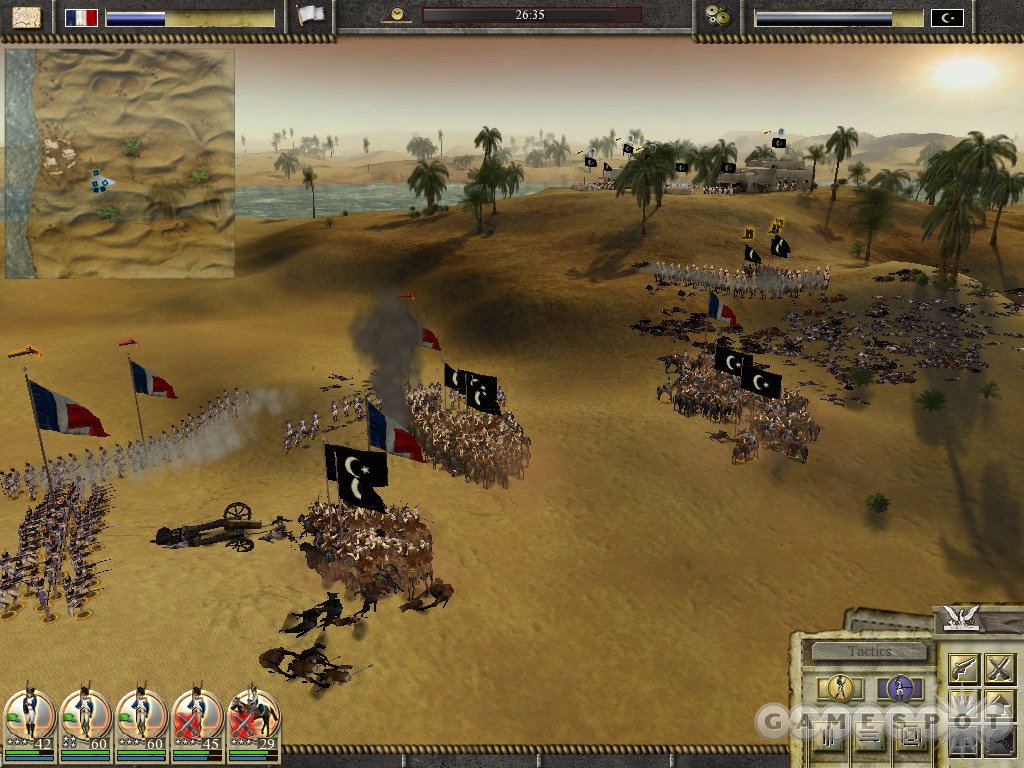
The Battle of the Pyramids
By Staff, Pyro StudiosWhen the young general, Napoléon Bonaparte, presented his plan to conquer Egypt to the government of the Directory, the undertaking was greeted with enthusiasm. Not only would it serve to deliver a powerful blow to England's colonial policy by cutting her route to India, but also it would remove from Paris a troublesome and ambitious soldier it was suspected would be more than a thorn in the Directory's collective side.
The Battle of the Pyramids took place on July 21, 1798, and it pitted Napoléon and his army against the ferocious Mameluke warriors of Murad Bey. The French were outnumbered--30,000 Egyptians to their 15,000 men--but the Corsican general's military genius, and the technological superiority of his army's weapons, brought about the defeat of the fearsome Mameluke horsemen, thus opening the gates to Cairo.
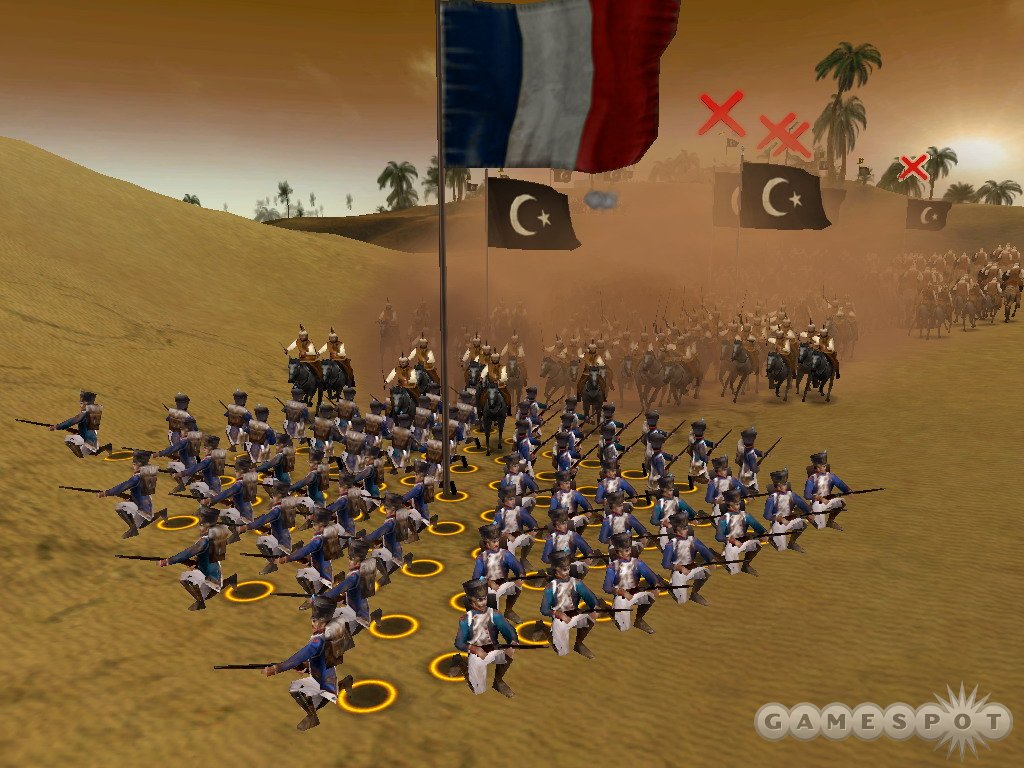
Murad Bey based his strategy on the division of his forces. He set up a stronghold with a large contingent of cavalry and artillery in the village of Embabeh and then sent the rest of his army to wait for Napoléon on open ground. His tactic was to attack and harass the French army, forcing it to adopt a defensive strategy against the devastating charges of the Mameluke army. The key to the French victory, however, was its use of the square formation, allowing the infantry to resist the Egyptian cavalry while taking advantage of artillery support. This tactic isolated the Mamelukes in Embabeh, who were annihilated after a tremendous assault.
At the end of the day, the Mameluke army had lost 5,000 men, while losses on the French side were barely 300.
To adapt this famous battle in Imperial Glory, we have configured both armies proportionately with the troops that took part in the battle that day, faithfully reproducing the numerical superiority of the Egyptians against the greater technical and tactical ability of Napoléon's army, as well as configuring the starting positions of both armies. The devastating power of the Mameluke cavalry is offset by the square formation's resistance to cavalry charges, the factor that would, on that day, let Napoléon win one of his most famous victories.
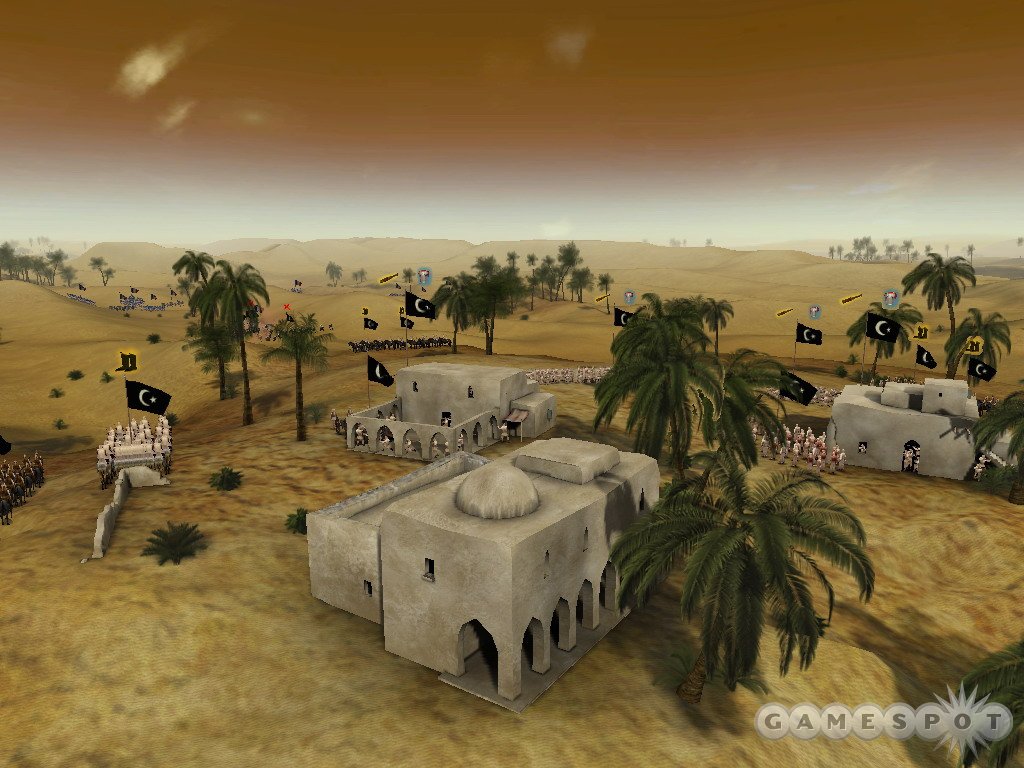
The map faithfully reproduces the battlefield. The Nile becomes a natural barrier that can either provide protection for one of an army's flanks or become a death trap. Numerous clusters of palm trees afford the infantry some protection against musket fire and charges. However, there is no doubt that the most important strategic point is the village of Embabeh, whose elevation above the surrounding terrain, together with the protection offered by its houses and parapets, make this point on the map crucial if victory is to be won.
To re-create the Battle of the Pyramids, we have drawn on the abundant documentary evidence of the event and the pictures painted by Bonaparte's contemporaries to the greater glory of their emperor, with the Pyramids and the Nile as silent witnesses to the story.
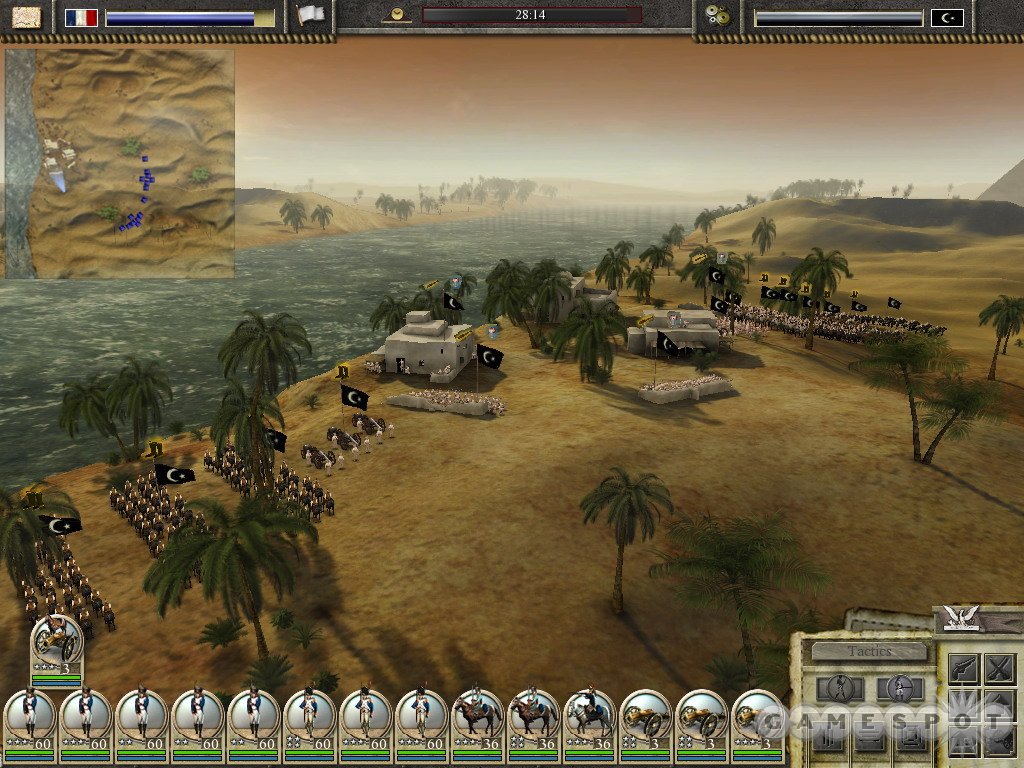
If you decide to lead the French army, you must take the utmost precaution against the charges of the Mameluke cavalry. To do so, the square formation is the most intelligent option, although care must also be taken to protect the artillery, which may prove to be vital in the capture of Embabeh.
The protection offered by the clusters of palm trees will be very useful in avoiding charges, although they will not prevent hand-to-hand attacks. A good strategy may be to advance toward the village of Embabeh in an attempt to attack it from one of the flanks, to minimize the firepower from the Egyptian resistance. However, you must be constantly alert to the possible charges of the Mameluke cavalry, which were particularly effective against infantry troops. Meanwhile, the elevated positions offered by dunes and hills may become an excellent point from which to attack the enemy with musket or artillery fire, reducing the enemy's ability to make charges.
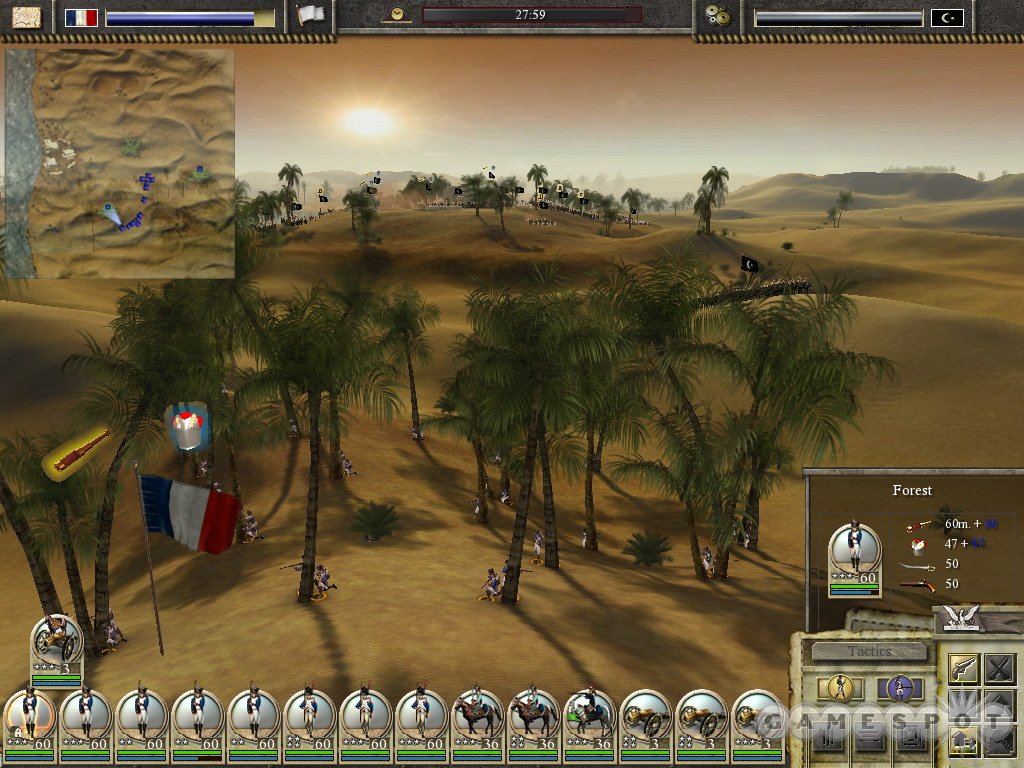
If you lead the Egyptian forces against the invader, you must take advantage of your greater proximity to the village of Embabeh. It would be advisable to create a stronghold there with infantry and artillery, as well as occupy buildings and parapets to obtain protection against any type of attack. Using the powerful Mameluke cavalry and camel-mounted troops, you may then harass the French as they lead their assault on the village.
You must be alert to the possible formation of squares, which will prove devastating for any army whose strength is based on hand-to-hand fighting. A good tactic may be to wait for the French army near the village and then, once there, launch cavalry charges, remaining mindful of the need to halt them when the enemy forms a square. Advantage can then be taken of the weakness of this formation against attacks from a distance and, in particular, the vulnerability of the square to artillery bombardment. This may be the chance to destroy Bonaparte's army, thus changing the face of history.
Got a news tip or want to contact us directly? Email news@gamespot.com
Join the conversation